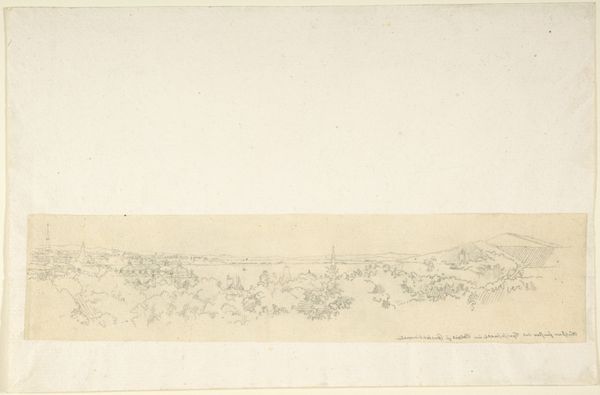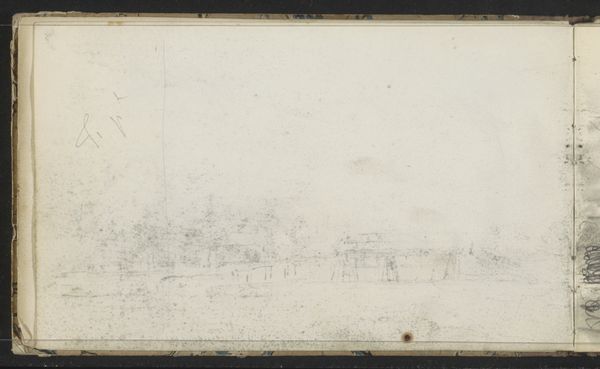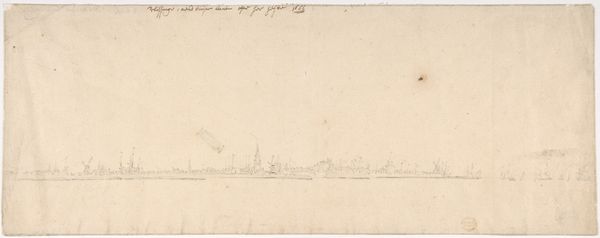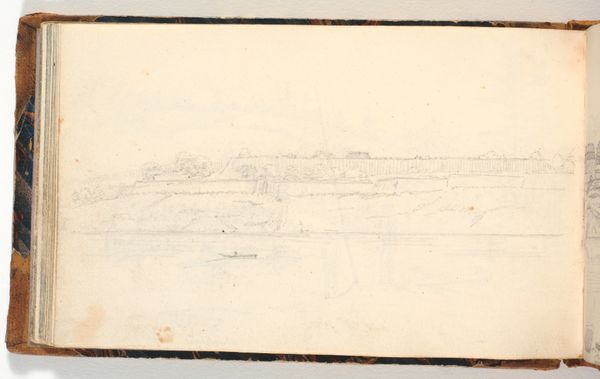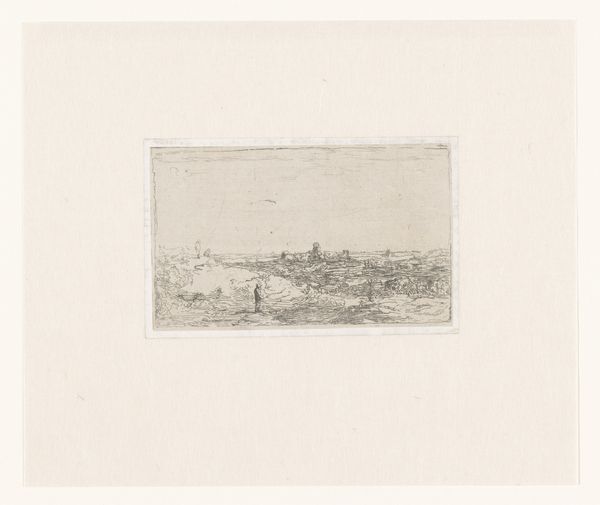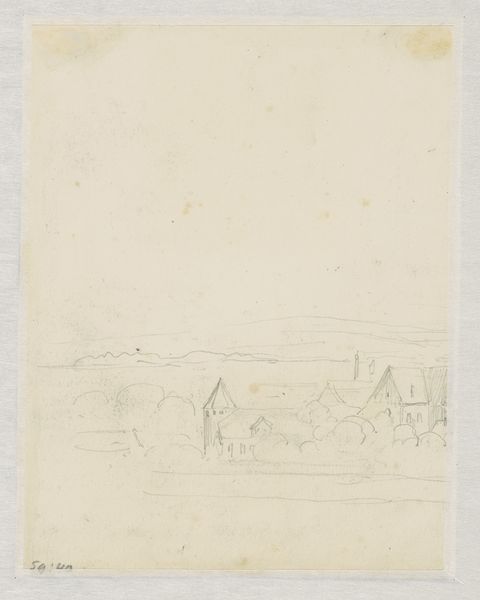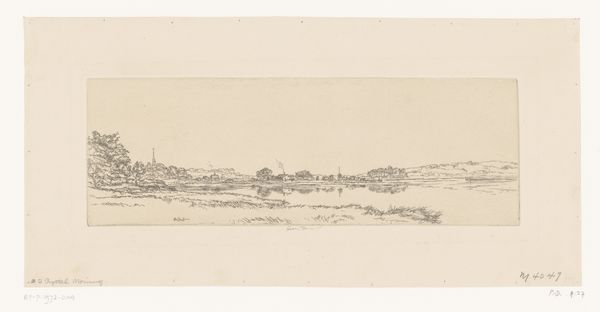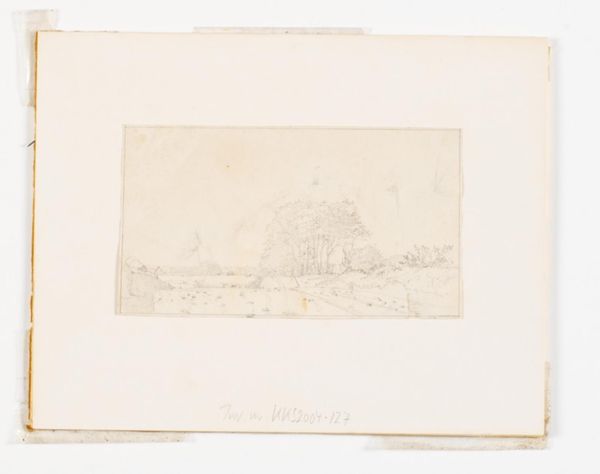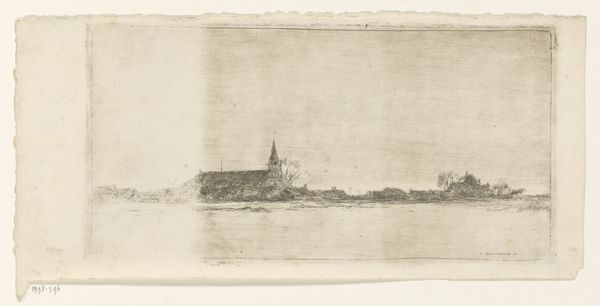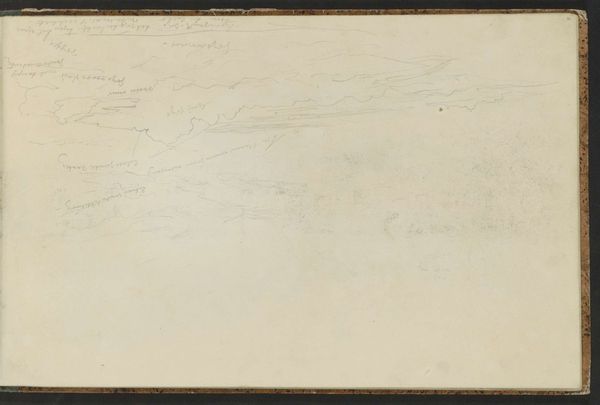
drawing, paper, pencil
#
drawing
#
landscape
#
paper
#
pencil
#
cityscape
#
realism
Dimensions: height 340 mm, width 486 mm
Copyright: Rijks Museum: Open Domain
Editor: So, this drawing is "Gezicht op Arnhem," or "View of Arnhem," by Lodewijk Johannes Kleijn. It was made sometime between 1827 and 1897 using pencil on paper. It feels very… fragile, almost ephemeral, doesn’t it? What stands out to you? Curator: The fragile quality speaks to the passage of time, doesn't it? Notice how the church spire dominates the composition. What do spires traditionally represent, both religiously and socially? Editor: I guess… reaching for heaven, or maybe the power of the church in the community? Curator: Precisely. And what does the depiction of Arnhem, specifically, tell us about the artist’s intentions? This isn't just *any* city; it’s *this* city. What memories might the image of Arnhem evoke for its inhabitants? Editor: Well, I imagine it would stir feelings of home, familiarity... possibly pride, if they felt positively about their city? Curator: Indeed. Consider how the artist uses delicate pencil strokes. It suggests a fleeting moment captured in time, less about architectural accuracy and more about evoking an emotional response connected to this specific place. Could this "ephemeral" quality you noted relate to collective memory itself, constantly shifting yet rooted in shared experiences? Editor: That’s interesting! I hadn't thought of the technique as reflecting memory itself, but that makes a lot of sense. It's less a precise record, more like a suggestion. Curator: Visual symbols embedded within places work much the same way. Thanks for noticing this emotional power and for the questions. Editor: Thanks! I learned to appreciate that what might seem like a straightforward cityscape is rich with layers of cultural and emotional meaning.
Comments
No comments
Be the first to comment and join the conversation on the ultimate creative platform.
